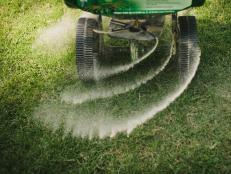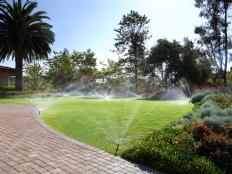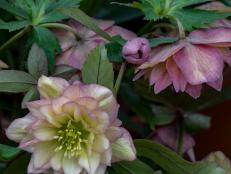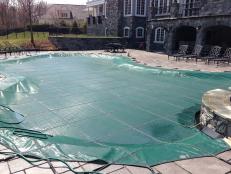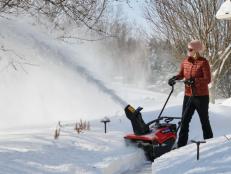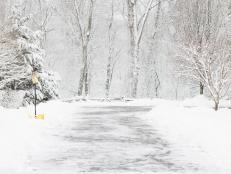How to Winterize Sprinklers, Hoses and Irrigation Systems
Learn how to blow out your lawn irrigation system to prevent cold-weather damage.
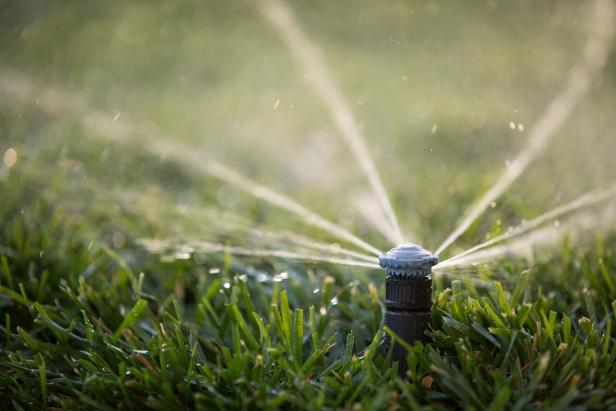
Rain Bird Corporation at RainBird.com

Learning how to properly winterize an irrigation system can save you a major headache come spring. Prepping sprinklers and other irrigation equipment for winter is most important in Zones 7 and colder, where winter brings prolonged episodes of freezing temperatures that can damage watering equipment. Even watering cans left outside can crack and develop leaks. Removing water from irrigation gear is the key to avoiding damage. Try the tips and methods below to prepare your irrigation for winter.
How to Winterize Sprinkler Systems
If you have an automated sprinkler system, it’s important to get all the water out of pipes and sprinklers before freezing temperatures arrive. Aim to prepare your irrigation for winter about the time autumn leaves start falling. There are three common ways to drain sprinkler systems before winter: manual drain, automatic drain or blow-out.
- Manually Draining a Sprinkler System. Open every manual valve, including any near the manifold. Elevate all fittings slightly to ensure they’re fully drained. Fittings can crack if any water is still in the tubing.
- Automatically Draining a Sprinkler System with Flush Valves. Your system may have flush valves installed at low points in the line. Each time the system shuts off, in turn lowering the water pressure, these valves automatically open and drain any water remaining in the lines. Double-check these valves to make sure they’re functioning properly.
- Blowing Out a Sprinkler System. This method uses compressed air to blow the water out of the lines. You can tackle blowing out the system yourself using a typical homeowner-grade air compressor (you need at least 40-50 PSI) or hire this task out to an irrigation specialist. Many irrigation companies run winterizing specials in the fall that include a general inspection of the system. Follow the steps below to safely and effectively blow out your sprinkler system.
After draining the majority of the water from the system, remove any faucet assembly, including things like the timer, filter and pressure regulator, and store these items indoors, protected from freezing temps. Seal the open faucet end of the system with a female hose fitting or simply cover it with a secure barrier of some type. This keeps dirt and critters from entering the system over winter.
How to Blow Out a Sprinkler System
Using a home air compressor to blow out your sprinkler system yourself can save you serious money over a typical service call.
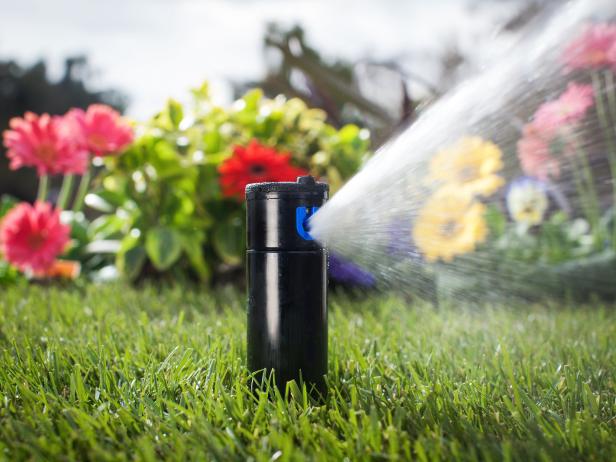
What You'll Need
- air compressor
- air hose
- quick-connect hose coupler
- safety glasses
- bucket or drain hose
- Shut off the water supply. Close the valve on the main line to prevent new water from entering the sprinkler system during the draining process.
- Drain the water from the main line. Place a bucket beneath the faucet and open the valve to remove the water from the main line. If your system is equipped with a hose bib, attach a hose to drain the water to your preferred area.
- Close the valves on the backflow preventer. This will prevent the compressed air from reaching the backflow preventer, which can damage it.
- Prep the air compressor. Depending on the size of your air compressor, you may need to regulate the pressure to prevent damage to your sprinkler system. The compressor must provide at least 40 PSI (pounds per square inch) to clear the water from the pipes, but you should regulate the pressure differently depending on the type of pipes you have. If your system is made up of PVC piping, do not exceed 80 PSI. If the system consists of polyethylene pipes, keep the pressure below 50 PSI.
- Connect the air compressor. The connection process will differ from system to system, but you'll most likely need a quick-connect hose adapter that screws into the blow-out port. However, there is a chance that your system has a built-in quick coupler that you can connect an air hose directly to.
- Open up the blow-out port valve (if equipped). This will allow the air to flow freely toward the zone valves.
- Blow out each sprinkler zone individually. Because an ordinary air compressor can't produce enough volume to blow out an entire sprinkler system at once, it's smarter to blow out one zone at a time. Start with the furthest zone. As you open the valve, you will hear the sprinkler heads in this zone engage and blow any water in the lines out. As soon as the water stops flowing, close the zone and open the next zone down the line.
Warning: It's imperative to stop the flow of compressed air once the water stops flowing through the heads to prevent the plastic components from overheating due to the lack of water. A minuscule amount of water left in the line is unlikely to cause any damage. - Release any remaining pressure in the line. After disconnecting the air compressor, make sure you release any compressed air that remains in the irrigation system by opening the backflow valves and main drain valve. Once the air has cleared, close all of the valves.
- Turn off the timer (if equipped). Prevent the system from attempting to run in the winter.
Pro tip: If your timer has a rain mode or standby setting, choose this instead of totally turning it off. This way, you won't have to reprogram your settings when it comes time to use your sprinkler again.
Prepping Other Irrigation Tools for Winter
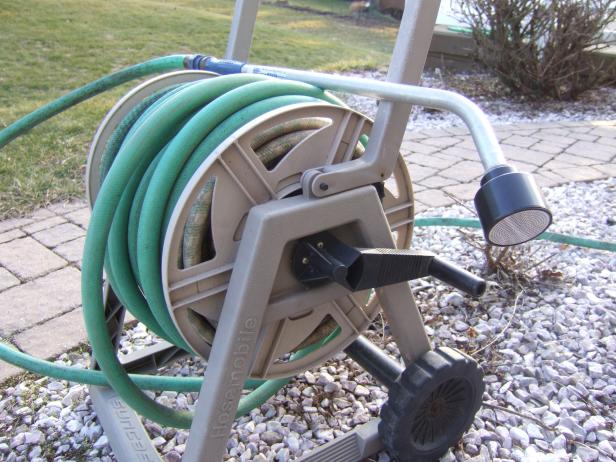
Julie Martens Forney
Drain and store all other watering equipment, including garden hoses, watering wands, hose-end nozzles and hose splitters. Once items are drained, stow them for winter. It’s best to store watering wands and nozzles in a spot where they won’t freeze.
Shut off water to exterior faucets at the interior turn off. After closing those valves, go back outside and open faucets until water stops running and the line is drained. Cover exterior faucets with an insulated faucet cover. Typically these covers feature foam construction (tightened in place with wing nuts) or insulated bags (tied in place).
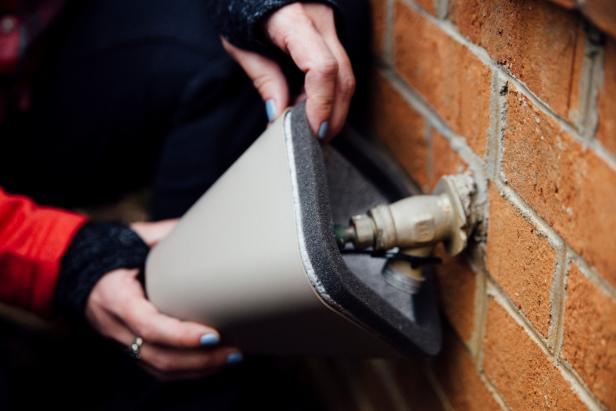
Andy Vinson, Loch & Key Productions

Andy Vinson, Loch & Key Productions
Maintain Watering Gear
Before storing watering tools for winter, take time to inspect and repair things. Here’s a checklist to help you get started.
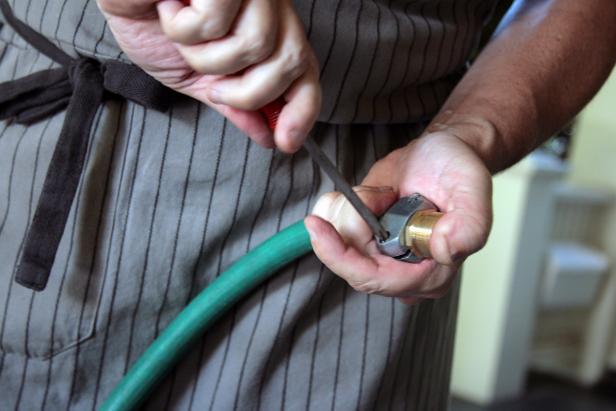
Gilmour at Gilmour.com
- Inspect fittings. Examine hose ends and quick connects, and replace anything that’s broken, dented, rusty or loose. Remember that you can cut the end off a garden hose, add a new coupling and skip the chore and expense of buying a new hose.
- Oil seals. A drop of silicone-based lubricant keeps O-rings, gaskets and washers soft and pliable. Look for these parts inside hoses, watering wands and irrigation system parts, including timer, filter, pressure regulator, valves and hose connections.
- Add covers. Invest in hose-end plugs to cover open hoses and end fittings on irrigation systems. Keep the end caps loose enough that water from condensation can drain over winter.











